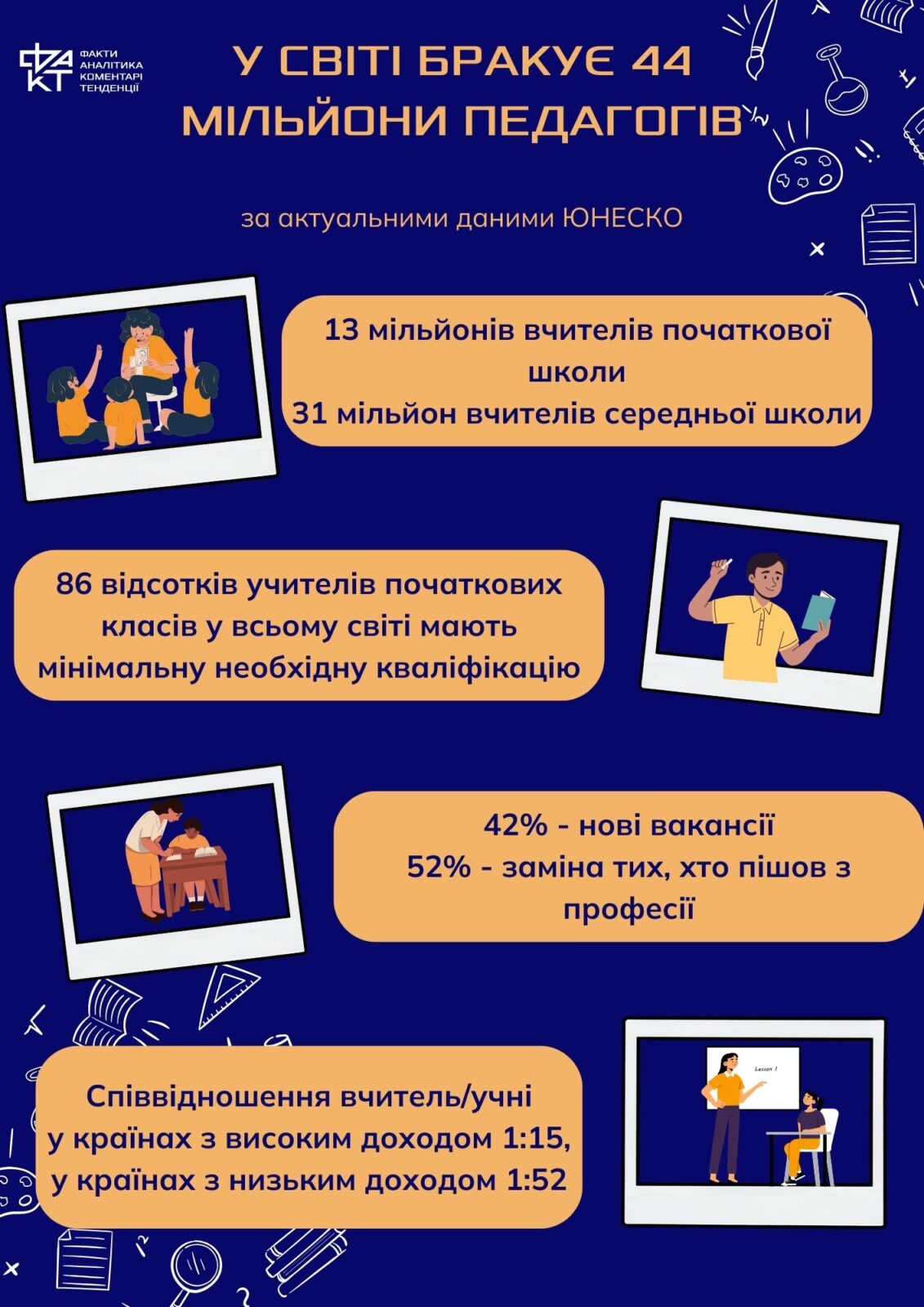Teachers are leaving the profession: what to do with the global shortage of teachers?

Teachers leave the profession. This is not a trend of individual countries, it is a global trend. According to UNESCO, there is a shortage of 44 million teachers in the world. And this means that the ambitious Sustainable Development Goals, including the provision of comprehensive quality education by 2030, are currently not achievable even at their core. It is no secret that the sustainable development of any society begins with equal access to education, where there are no gender and material differences, but instead there is barrier-free.
The deficit is gradually decreasing. In 2016, the world lacked 69 million teachers. However, this trend is not sustainable for all countries. The greatest need for teachers remains in sub-Saharan Africa at 15 million, as these are areas with rapidly growing school-age populations and limited funding for teachers. This is followed by Southeast Asia – 4.5 million, North Africa and Western Asia – 4.3 million teachers. Europe and North America need 4.8 million teachers.
In general, the world needs 13 million primary school teachers and 31 million secondary school teachers. At the same time, it is important to simultaneously increase the level of competence of teachers: 86 percent of primary school teachers around the world have the minimum necessary qualifications. This figure drops significantly to only 69 percent in the case of sub-Saharan Africa.
The best prospects for attracting teachers are observed in the countries of East Asia. The worst are in sub-Saharan Africa.

The number of teachers needed to replace those leaving the workforce is 58 percent, while the remaining 42 percent is for new teaching positions. There is also a gender aspect of the problem of staff shortage in the field of education: male teachers leave the profession more often than women. They have greater employment opportunities than women, who traditionally predominate in low-wage service sectors such as education and social care.
The consequences of the teacher shortage are diverse but interrelated. The shortage has a significant impact on the workload of teachers: they are forced to work much more than what is prescribed by the regulatory volumes. As a result, the experience of constant overload of teachers, chronic fatigue deter future generations from choosing the teaching profession. Negative experiences create a cycle of low-quality education, put teachers at a lifelong disadvantage, and perpetuate educational inequality.
As a result of the shortage, we can see overcrowded classrooms, which directly affects the quality of education. In primary education in high-income countries, the average student-to-teacher ratio is 15:1. Whereas low-income countries face a much higher ratio of 52 students per teacher.
There is also global teacher pay inequality, with some teachers earning twice as much as their counterparts from other countries. An analysis of primary education shows that in half of the countries, primary school teachers are paid less than representatives of other professions that require similar qualifications. In Hungary, for example, primary school teachers earn half as much as professionals with similar qualifications. Whereas in Singapore, Luxembourg, Colombia, the Dominican Republic and Ecuador, teachers earn at least 50% more than professionals with similar qualifications. According to UNESCO forecasts, only part of the countries will reach the required number of teachers by 2030. Based on historical annual growth rates, 78 of the 197 states are expected to have the required number of teachers to provide universal primary education.





